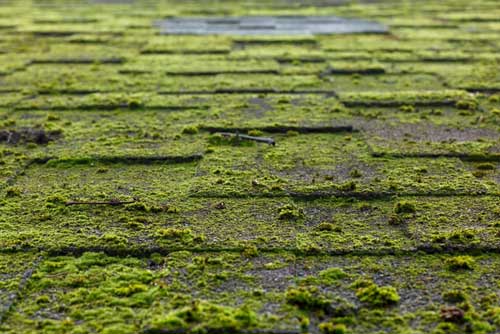4 Common Roof Misconceptions & the Truth Behind Them

If you own a home, you know how important it is to keep your roof in good shape. Your roof shields your family and possessions from the elements and protects the interior and exterior of your home — including your home’s foundation and walls — from water and other damage.
Unfortunately, you may believe some common roof misconceptions that keep you from properly maintaining your roof and/or making an educated decision when replacing it.
Read on to learn about four common roof myths and the truth behind them.
Myth #1: A Layer of Debris Cannot Harm a Roof
You may occasionally glance at your roof and realize it is covered in debris, such as leaves and twigs, and think that this debris is harmless. While leaves and other debris may not cause immediate damage to your roof, the moisture this debris holds onto can damage your roof over time.
When wet leaves are covering your roof, they can cause your shingles, roof underlayment, and even the wooden frame of your roof to rot. When your roof rots, it can spring a leak that allows water to enter your home. These wet leaves also create a breeding ground for dangerous mold and mildew.
To remove debris from your roof now to prevent this damage, opt for a professional roof cleaning. Then, instead of attempting to clean leaves and debris off your roof every time they collect, which would be a dangerous, time-consuming nuisance, have any tree branches that hang over your roof removed by a tree trimming expert to reduce the debris that falls onto your roof.
Myth #2: Moss Growth on a Roof is Unsightly, Yet Harmless
If you have seen green moss growing on your roof, then you may think that moss is just a harmless eyesore that does not need to be removed. However, while common, moss growth on a roof can harm it. After the wind blows moss spores onto a roof, these spores absorb moisture and then develop root systems that can penetrate into and under your roof shingles and sometimes into the underlayment of your roof.
These root systems can lift shingles as they grow under them, leading to roof damage. In addition, just like debris, moss can hold onto moisture that can lead to more serious roof damage in the form of roof rot. Moss also restricts rain and water flow, creating water dams on your roof which can lead to water damage and leaking issues.
While there is no way to keep moss spores from landing on your roof, have any moss currently growing on your roof removed by a roof cleaning expert before it damages your roof. You can then ask the roof professional to apply a special moss-deterrent product, such as zinc strips, to your roof. When rainwater passes over these zinc strips, zinc molecules are released onto your roof that naturally kill moss spores before they begin flourishing.
Myth #3: Adding a Layer of Shingles Over Existing Ones Has No Disadvantages
If you have asphalt shingles that are deteriorating, then you may have heard that a roofer can lay a new layer of shingles right on top of the old ones when installing your new roof. This process is called re-roofing, and it can be a good option in some instances. Many homeowners opt for re-roofing to avoid the labor-intensive and costly task of removing old roofing materials.
However, re-roofing does have its disadvantages that should be considered before opting for this roof repair option. First, when you add an extra layer of shingles, you double the weight of your roof. Some roof frames have a difficult time supporting this extra weight, especially if the roof eventually becomes covered in heavy snowfall.
In addition, some roofing professionals have a difficult time inspecting roof sheathing and underlayment for damage with existing shingles still in place. If problems with these roof components are missed when re-roofing, then they can worsen over time and lead to a need for a full roof replacement again sooner than necessary.
Myth #4: Metal Roofs Attract Lightening
While asphalt shingles are still the most popular residential roof material in the country, many homeowners are considering metal roofs due to their unique benefits. However, there are many myths surrounding metal roofs that lead to homeowners being hesitant to replace their current roofs with metal ones.
One common misconception about metal roofs is that they attract lightening. The truth is that lightening is attracted to the tallest building or object in the general area it is striking, regardless of what the building or object is made of.
In addition, if lightening does strike your metal roof by chance, your home and family are no more likely to suffer harm from the lightening strike than if you had a roof made of a different material. In fact, the metal roof may even protect your home and family more than a roof made of an alternative material. For example, if lightening hits a roof made of wood, the wood could immediately catch fire, leading to a house fire, while a metal roof is fireproof.
If you own a home, forget these four common roof misconceptions so you can maintain your roof properly and make a more educated decision when it’s time to replace your roof. Contact the roof experts at A-1 Roofing Inc. to schedule any needed roof services today.
